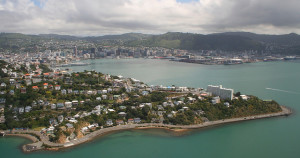An earthquake of the same magnitude that struck Kaikoura in November last year would cost billions if it hit the capital directly, a new report claims
The Forgotten Impact report by international risk management consultancy Deloitte estimates the country would sustain a $29 billion hit if a similar 7.8 magnitude quake occurred directly under Wellington.
Some $26 billion of that charge would be borne by Wellington, the country’s second-largest city, report author and Deloitte Partner-Corporate Finance Linda Meade believes.
“It goes without saying that a similar size earthquake occurring directly under Wellington city would have a catastrophic impact on Wellington and, as Wellington’s economy is second only to Auckland in size, the country more generally,” she says.
She used data from the 22 February 2011 Christchurch earthquake to quantify the shock, which includes impacts such as:
- cost of damage estimates of around 2.5 per cent of the nation’s capital stock
- a 9 per cent reduction in employment in the two years following the earthquake
- the doubling of the overall cost of dwelling insurance.
However, Wellington’s regional GDP is estimated to benefit by $260 million for every 1 per cent reduction in these factors, Meade adds.
“This highlights the importance of improving resiliency in the highly earthquake-vulnerable capital city,” she says.
“Investments today will see a stronger and better-prepared city for the unfortunate occurrence of any larger-scale event in Wellington.”
Wellington has already received a reminder of the danger with a repeat of the Kaikoura quake, which cost private insurers more than $900 million in business claims according to the Insurance Council of New Zealand.
The Wellington region bore the brunt of business losses with two thirds (65 per cent) of the total, although it’s not clear what proportion of the approximately $600 million relates to building repairs in Wellington.
“However, we do know that to date, 61 Molesworth Street, Defence House, Reading Cinema carpark, and MSC Building have been demolished or are planned to be, and question marks still hang over the fates of a clutch of buildings including Statistics House and BNZ Harbour Quays.”
She cites last year’s Deadly Heritage report, co-authored with NZ Initiative, which found that respondents (owners of buildings) were unanimous in their opinion that engineering assessments were markedly wide-ranging with an artificially low number of so-called ‘safe-bet’ low-New Building Standards (NBS) assessments.
“We noted that this may be due to conservatism among engineers due to the unprecedented level of scrutiny on the profession after the experience in Christchurch.”
The Deadly Heritage report also found that the main barrier to the heritage remediation process is the tremendous cost of strengthening.
“This is exacerbated by limited access to capital from both public and private sources and the returns able to be achieved after the process has been completed.”
These findings are likely to apply equally to non-heritage buildings, in which case, ‘safe-bet’ NBS assessments and the uncertain costs necessary to lift NBS ratings to acceptable levels may, in some cases, lead building owners to elect for demolition over repairs and strengthening.
“If true, this is an inefficient outcome, as not only are buildings with remaining economic value being removed, but their demolition impacts the surrounding environment far more than remediation – for example, closed roads and nearby businesses.”
Meade notes that the Cook Islands High Commission has continued to sit empty and in limbo for months while decisions about the Revera House are being made, despite being declared as unaffected itself.
“Over the long run, this inefficiency is partially offset by the economic value of the build process and higher quality replacement,” she concedes.
However, the decision of whether to repair or replace a building can be especially difficult if the building has been given heritage status.
The demolition process involves a much lengthier regulatory process, and regulation regarding like-for-like heritage replacement specifications often make repairs unnecessarily expensive.
Deloitte’s Deadly Heritage report found “where demolition is an available option to building owners (i.e. repair strategies are uneconomical), that option is often unavailable for (heritage) listed buildings.”
The regulatory process involved in the demolition of a heritage building is a particular concern for public safety.
“As we recommended in Deadly Heritage, central government clarification of the NBS, leading to a more uniform/ standardised application, should make for quicker decision-making by building owners and more efficient outcomes.
“Switching to a liability-based regime, which would ensure that the most important strengthening works are completed the fastest, and the worst-off buildings are made safe first, would reduce safety concerns and prevent further disruption caused to surrounding buildings.”
Fundamentally, Meade says, it’s important that “we invest more systematically in resilience as a country” and that central government work hand-in-glove with local government.
“Investment in resilience cannot be ad hoc and piecemeal,” she insists. “Too often central and local government appear to be pulling in opposite directions rather than jointly for the benefit of New Zealanders.”
Nowhere is this more starkly demonstrated than in Wellington as the capital. “If Wellington were to experience a major event, the impacts on central government would be much more far-reaching than the inability to access computers currently trapped inside Statistics House, or relocation of Defence staff from Thorndon to Trentham for a few weeks.”
Deloitte recommends a combination of regulatory reform, substantially closer working relationships between central and local government, and investment in a range of measures to boost future resilience.
“Utilities, such as Wellington’s port and water facilities are fragile, yet will be hugely important in delivering an emergency response,” Meade notes. “Now is the time to plan and invest in strengthening Wellington’s vital lifelines – land, sea, and air.”



